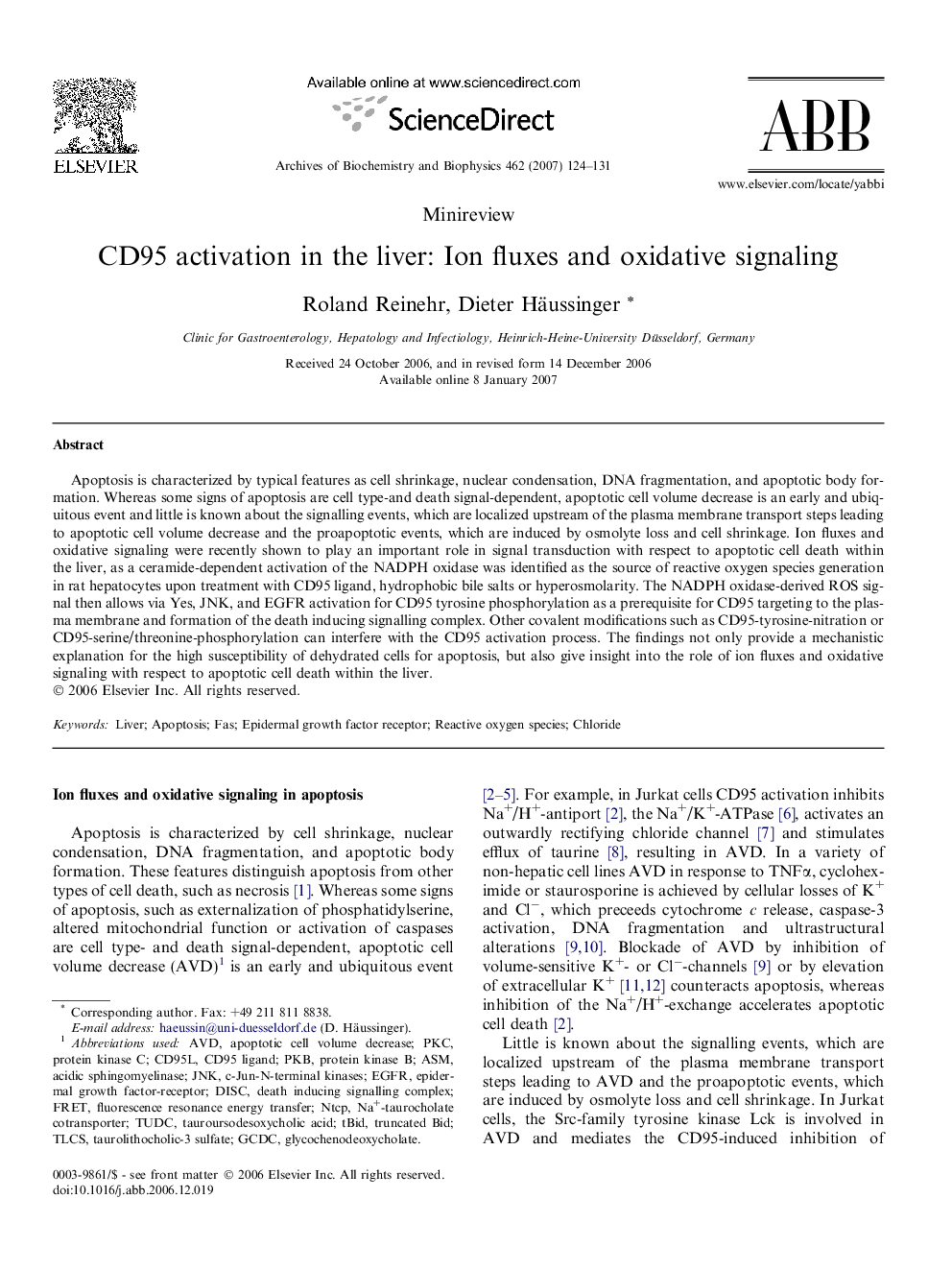| Article ID | Journal | Published Year | Pages | File Type |
|---|---|---|---|---|
| 1926993 | Archives of Biochemistry and Biophysics | 2007 | 8 Pages |
Apoptosis is characterized by typical features as cell shrinkage, nuclear condensation, DNA fragmentation, and apoptotic body formation. Whereas some signs of apoptosis are cell type-and death signal-dependent, apoptotic cell volume decrease is an early and ubiquitous event and little is known about the signalling events, which are localized upstream of the plasma membrane transport steps leading to apoptotic cell volume decrease and the proapoptotic events, which are induced by osmolyte loss and cell shrinkage. Ion fluxes and oxidative signaling were recently shown to play an important role in signal transduction with respect to apoptotic cell death within the liver, as a ceramide-dependent activation of the NADPH oxidase was identified as the source of reactive oxygen species generation in rat hepatocytes upon treatment with CD95 ligand, hydrophobic bile salts or hyperosmolarity. The NADPH oxidase-derived ROS signal then allows via Yes, JNK, and EGFR activation for CD95 tyrosine phosphorylation as a prerequisite for CD95 targeting to the plasma membrane and formation of the death inducing signalling complex. Other covalent modifications such as CD95-tyrosine-nitration or CD95-serine/threonine-phosphorylation can interfere with the CD95 activation process. The findings not only provide a mechanistic explanation for the high susceptibility of dehydrated cells for apoptosis, but also give insight into the role of ion fluxes and oxidative signaling with respect to apoptotic cell death within the liver.
